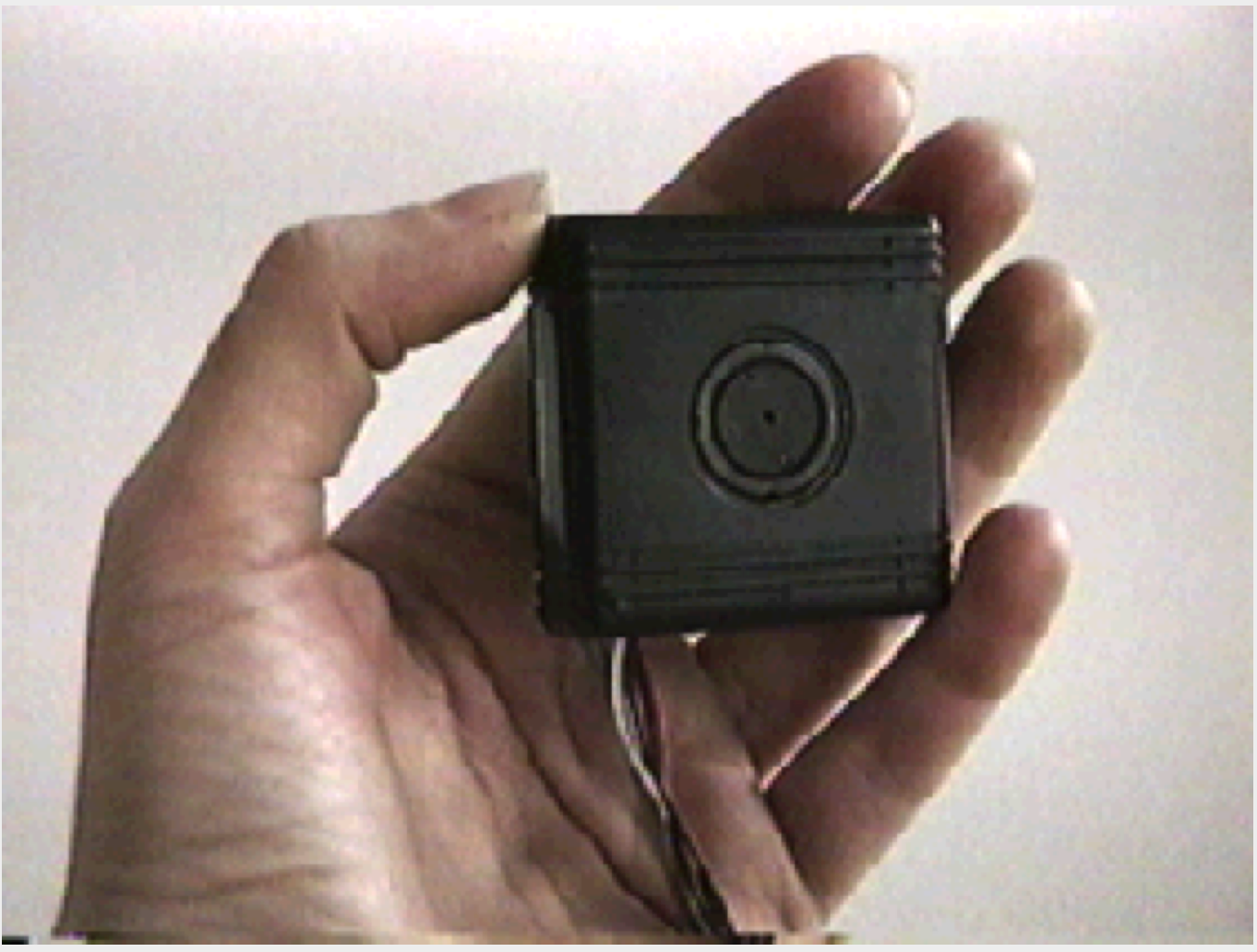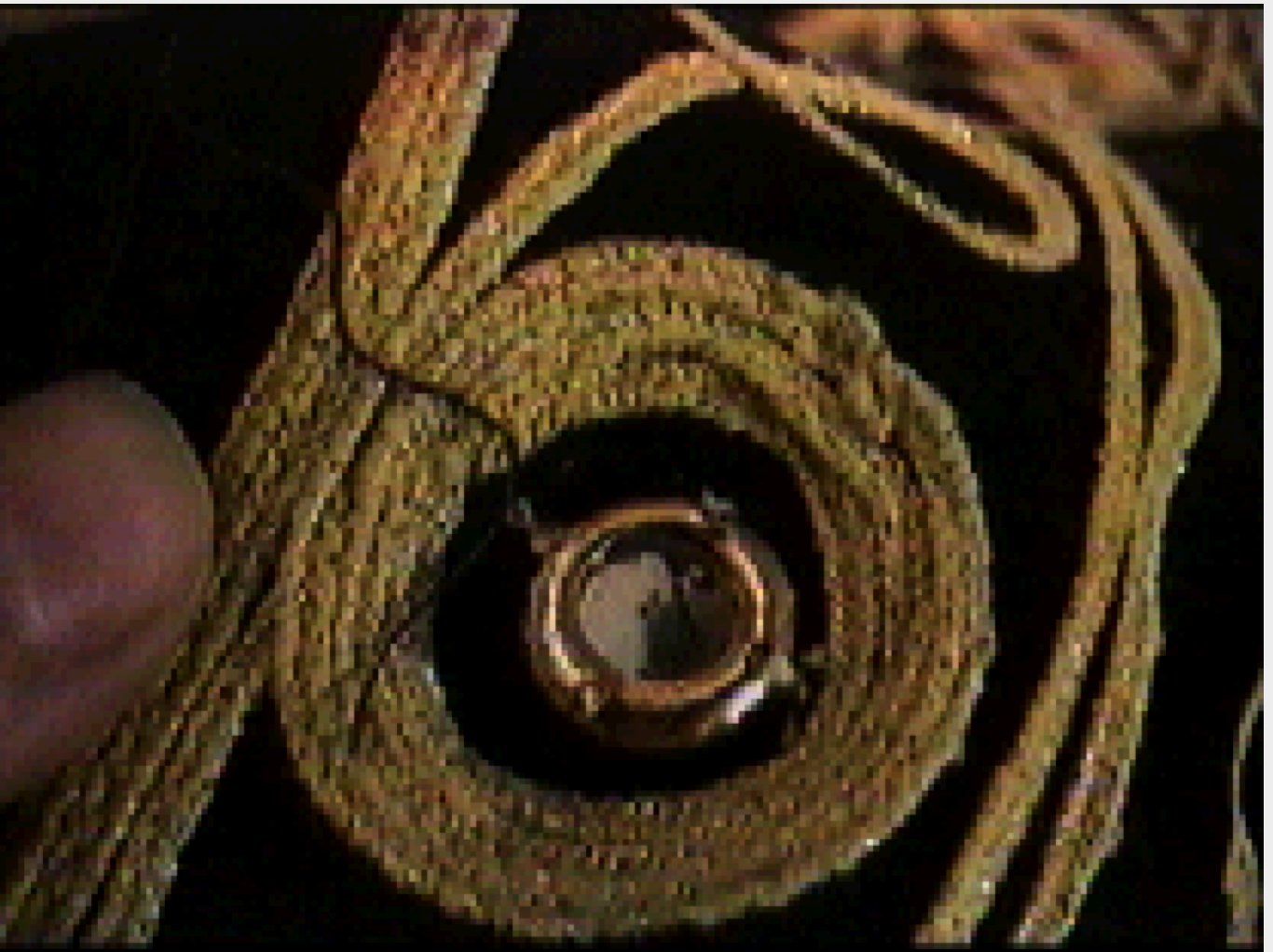
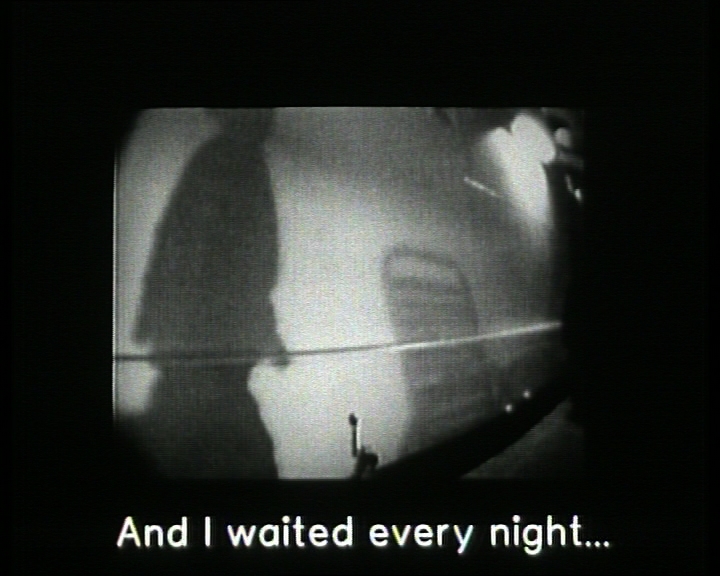
ZONE
Synopsis
An experiment—filming without looking through a viewfinder, the camera attached to my body. I filmed it, in 1994, on a ship, crossing the Atlantic and created the story later on. Now I feel only the process was of interest and the last shot, a Filipino sailor, cleaning the decks at 4am. When, in 2000, the Rotterdam Film Festival commissioned me to make a video in a port, this image led me to make Cargo.
Laura Waddington
On the making of ZONE
I boarded a transatlantic cruise ship, bound for England. Wandering the decks, I learnt to frame with the movement of my body, my shoulders hunched over to prevent the camera from sloping up towards the sky. Fascinated by the blurred boundary between documentary and fiction, I wanted to see if I could create a fictional story out of randomly shot documentary footage.
Read related passage in Scattered Truth
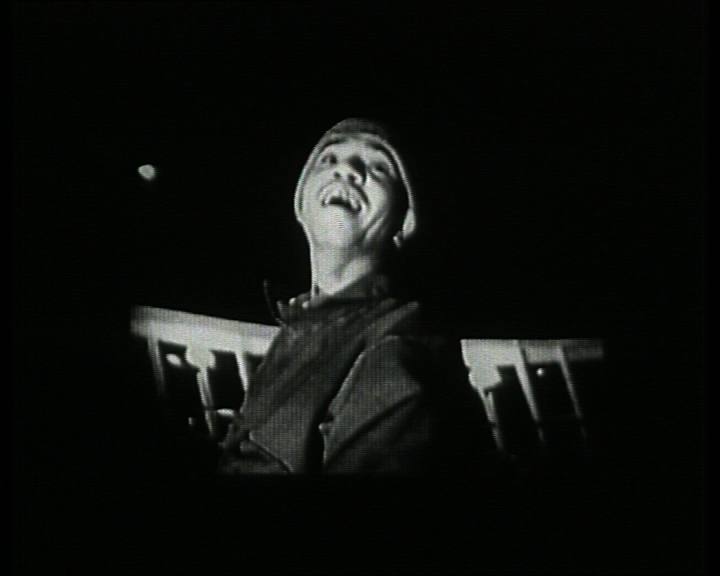
Press Quotes
“In Zone, the observing subject is the filmmaker herself, who travels on a cruise ship with a hidden camera. Here, too, the voice-over sets the tone, a reflection on longing and loss. The motif of the journey as a search for identity runs like a thread through all of Waddington’s works. The destinations are unknown and unimportant; what matters is the experience itself. These experiences are not passively undertaken; rather, the filmmaker participates in the stories and the lives of those she films.”
Oliver Rahayel, Film Dienst, Bonn
“She boards the ship, the QE2, from New York to England. The situation implies unavoidable solitude: the passengers in their cabins do not notice the sea. Alone, a woman paces up and down the decks, looking for a man, who is perhaps not there or who simply does not exist. It would be wrong to suspect voyeurism in the use of a camera, normally reserved for spying. For what Laura Waddington is really tracing is her capacity to renounce her gaze and abandon herself to the movement of her body in order to produce a trembling of vision… a gaze that encompasses everything in a single gesture.”
Bouchra Khalili, The 51st International Short Film Festival Oberhausen Catalogue, Germany
Read catalogue essay: The Pain of Seeing (English translation)
“At first I kept viewing video in terms of film, like a poor relation. I thought I had to find a way to make it my own. So I made the decision to film without using my eyes in order to completely unlearn. I hoped that if I worked in this way when I came back to using a normal video camera it would be like filming for the first time. I bought a spy camera and sewed it into a Turkish waistcoat. The waistcoat was covered in small circular mirrors and I removed one of the mirrors and put the camera in its place. Then I boarded a cruise ship, crossing the Atlantic. On the ship I had no way of seeing what I was filming and had to learn to trust the movement of my body. After a while I realised the angle wasn’t good – the camera was sloping upwards so I had to adopt a very strange walk, my shoulders hunched over.”
Interview with Laura Waddington by Olaf Möller, 41a Mostra Internazionale del Nuovo Cinema Pesaro Catalogue, Italy
Read: Interview with Laura Waddington (English original)
Read: Interview with Laura Waddington (Italian translation)
“In Zone… instead, it is the body that becomes a diaphragm and carries out new possible forms of witness. The proximity of the video camera to the body, in fact, makes the hybridization between body, gaze and machine more complex compared to the relationship established by Vertov and Snow.”
Cecilia Bima, Lacune visive: Bassa definizione per un’etica della testimonianza
Read chapter: Zone: un esercizio di disapprendimento per “riarmare gli occhi” (English translation)
Read chapter: Zone: un esercizio di disapprendimento per “riarmare gli occhi” (Italian original)
“But she does not stop there. She sets about methodically destroying this trembling image: she re-films the images in video, then breaks through the layers to get closer to the consistency of film. There is nothing redemptive in this re-working of texture. It is, in fact, the degrading of the original recording to better reveal the nature of its vision: impure, fragile and haphazard. This ceding of control is why there will be no fetish of the recorded image in the cinema of Laura Waddington.It is what allows her to make The Lost Days (1999) without having filmed a single shot.”
Bouchra Khalili, The 51st International Short Film Festival Oberhausen Catalogue, Germany
Read catalogue essay: The Pain of Seeing (English translation)
“When I recall those months, that I spent immersed inside layers of video, searching for something, which I never found—Zone reveals little of the long experiment—I think of the words of Michelangelo Antonioni: ‘Under the revealed image, there is another one which is more faithful to reality, and under this one there is yet another, and again another under this last one, down to the true image of that absolute, mysterious reality that nobody will ever see. Or perhaps, not until the decomposition of every image, every reality’ I had failed to get beneath the shallow surface of video. Unlike the flicker of film which draws you into the screen, the flow of video images, which I re-filmed off my monitor were, like the story that grew out of them, hazy and opaque.“
Laura Waddington, Scattered Truth
Read writing: Scattered Truth part 2a
“Zone (1995) is an experiment, an attempt on the artist’s part to reevaluate and deconstruct the teachings acquired during her education in the practice of cinema. More concretely, the documentary sets in motion dynamics that aim to dismantle and question the foundations of conventional cinematographic language.”
Cecilia Bima, Lacune visive: Bassa definizione per un’etica della testimonianza
Read chapter: Zone: un esercizio di disapprendimento per “riarmare gli occhi” (English translation)
Read chapter: Zone: un esercizio di disapprendimento per “riarmare gli occhi” (Italian original)
CECILIA BIMA: for an Aesthetic of Opacity
“In The Transparency Society, Korean philosopher Byung-Chul Han reveals the tendency to eliminate otherness and to smooth over differences as a peculiar aspect of contemporary life. In this regard he writes:
Transparent communication is communication that has a smoothing and levelling effect. It leads to synchronization and uniformity. It eliminates Otherness. Compulsive conformity proceeds from transparency.8
No space is left for the asymmetry of gazes and perspectives … Things appear as transparent, lucid and clear, precisely when they hide any form of negativity or are diluted and flattened out .. the society Han describes favors a dismantling of the negative in favor of the positive, of evidence and clarity; this is why one of the most significant aspects of the society of transparence is being a society of the positive.
It is precisely on this conceptual level that it is possible to compare the images of the three documentaries [by Laura Waddington] under examination here: there appears, in the expressive choices and in the perspectives adopted, a will to preserve the shadow, the negative, which underpins any existence; Laura Waddington allows the impermeability of certain conditions to remain that way, and observers, along with her, are lead, after being subjected to a cognitive effort, to consider the otherness to which they are witnesses and the distance that cannot be covered.
.. the aesthetic choices of Laura Waddington respond, instead, to a need to generate a counter-narration, or, in Nicholas Mirzoeff’s terms, a countervisuality … not only to conceive different forms of looking, but also and above all dismantling traditional visual strategies, to redefine reality.”
Cecilia Bima, Lacune visive: Bassa definizione per un’etica della testimonianza
Read conclusions: Tre esempi paradigmatici per un’estetica dell’opacità (English translation)
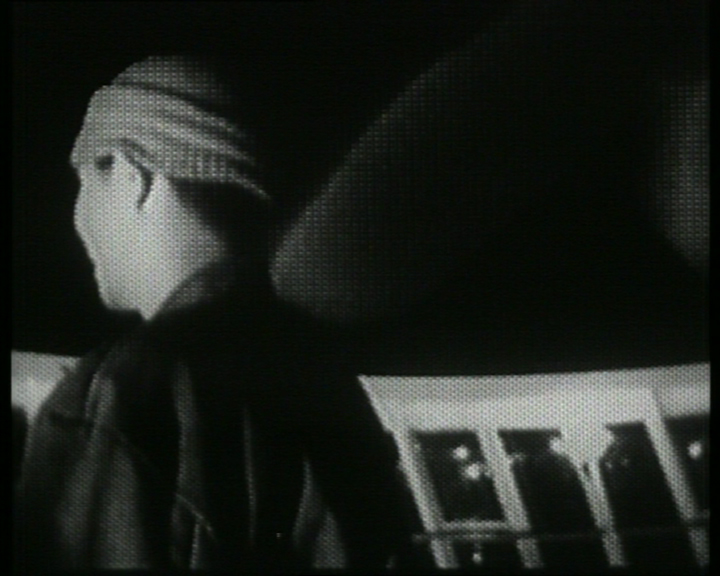
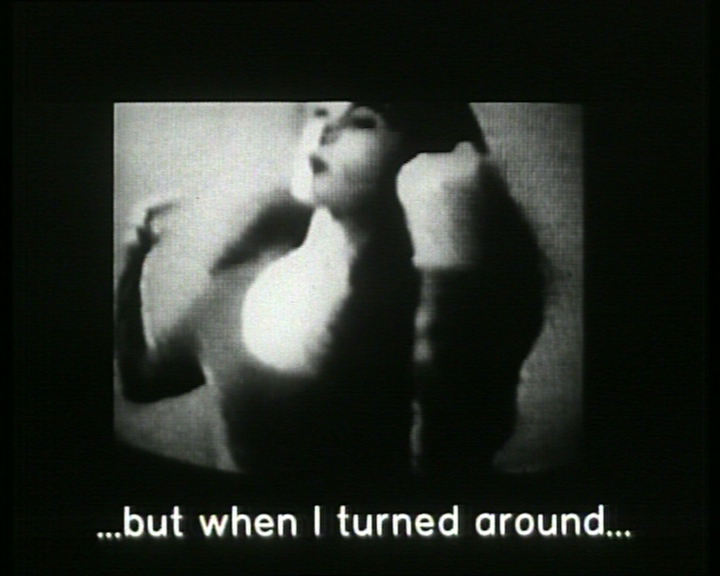
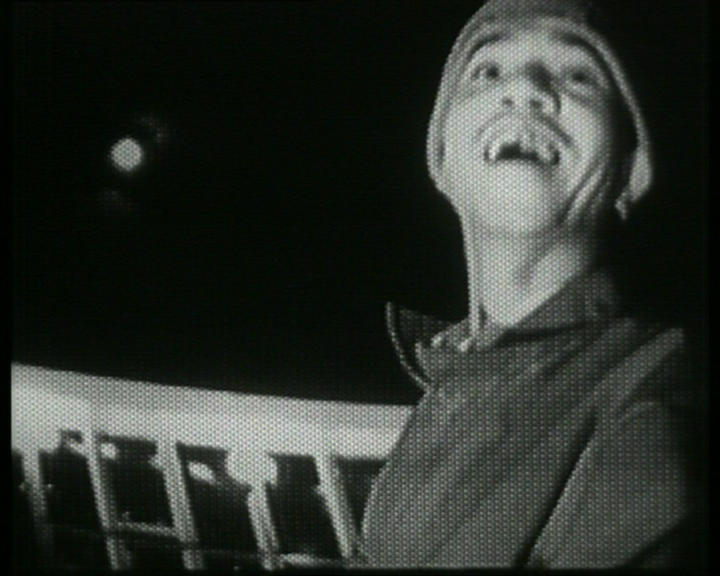
Selected Screenings
- 25th Montreal International Festival of New Cinema and New Media (FCMM), Canada [world premiere]
- 5th New York Video Festival, Walter Reade Theater, Film Society of Lincoln Center, New York, US
- VIPER International Film, Video and Multimedia Festival, Luzerne, Switzerland
- 8th European Media Art Festival, Osnabrük, Germany
- 12th Hamburg Short film festival, Hamburg, Germany
- The Knitting Factory video lounge, New York, US
- In Person: Laura Waddington, Österreichisches Filmmuseum, Vienna, Austria [curated by Brigitta Burger-Utzer, Sixpack Film]
- Omaggio a Laura Waddington, 41st Pesaro International Film Festival, Italy
- Special: Laura Waddington, 51st Oberhausen International Short Film Festival, Germany
Back to top
